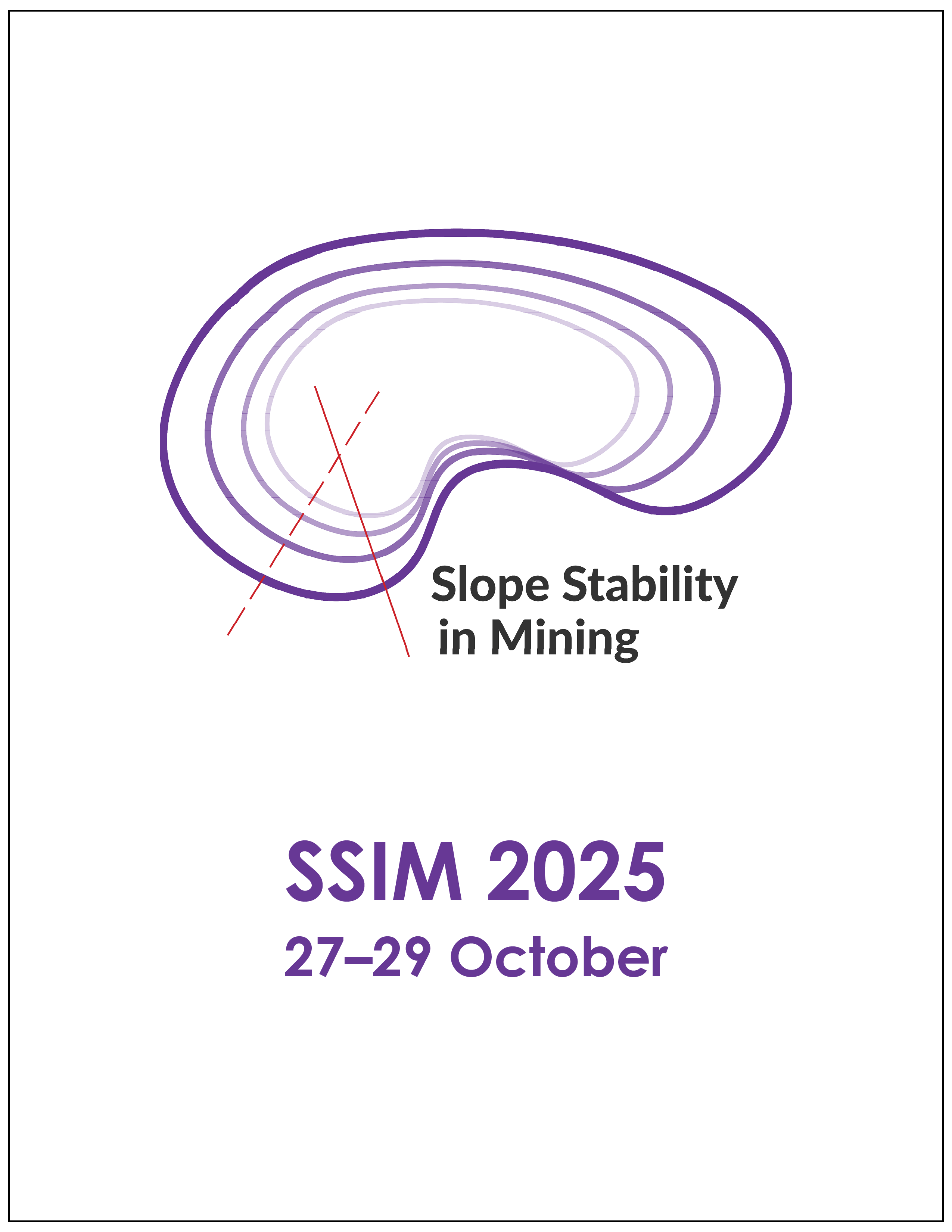Practical significance of strain-dependency and 3D-confinement-dependency of dilation mobilisation for rock slope stability evaluation

|
Authors: Farahmand, K; Rahjoo, M |
DOI https://doi.org/10.36487/ACG_repo/2535_30
Cite As:
Farahmand, K & Rahjoo, M 2025, 'Practical significance of strain-dependency and 3D-confinement-dependency of dilation mobilisation for rock slope stability evaluation', in JJ Potter & J Wesseloo (eds), SSIM 2025: Fourth International Slope Stability in Mining Conference, Australian Centre for Geomechanics, Perth, https://doi.org/10.36487/ACG_repo/2535_30
Abstract:
Realistic evaluation of rock slope deformation and the corresponding Factor of Safety is essential for the success of open pit mining projects. In the context of numerical modelling investigation, this paper presents a framework for incorporation of three-dimensional (3D) confinement dependency and plastic straining dependency of dilation during the failure progression, which are the main limitations of conventionally used uniform dilation models. Current dilation models neglect the directional nature of the fracturing process and the influence of 3D confinement. Most commonly, the impact of shearing history and 3D confinement on dilatancy is oversimplified by adopting a uniform dilation model with minimal dilation (e.g. a constant 0–5˚ dilation angle). Advanced dilation models have been presented in the past decades to address these limits, however, have not found application in slope design. Rooted in relying on numerous empirical parameters that lack direct physical meaning, these advanced models have failed to assist the practitioners with understanding of the impact of realistic dilation on deformation response of progressive yielding in rock slopes. To begin with, the theoretical framework of the present research is discussed. The concept of dilation for rocks is briefly explained, including directional and mobilisation characteristics of dilation in relation to the fracturing process under various 3D stress states. The concept of plastic strain increments ratio (PSIR) and its use for formulation of dilation models is explained next, ending with proposing the specific PSIR-based straindependent and 3D confinement-dependent dilation model used for slope stability analysis coded in FLAC3D. A generic concave open pit model with aspect ratios 2:1 and 4:1 was selected. Four dilation models were used for each geometry, including uniform, S2-dependent only, strain-dependent only, strain-dependent plus S3-dependent, and strain-dependent plus 3D confinement-dependent. The analyses consist of comparing the contours of dilation angle mobilisation, displacement, Strength Reduction Factor, and maximum shear strain for the five cases. It is demonstrated that, in contrast to the uniform dilation model, the straindependent dilation model effectively captures the decrease of dilation from the onset of yielding towards the residual state. Next, the effect of S2 and S3 (the intermediate and minimum principal stresses) on promoting and suppressing dilation, respectively, is discussed. By considering the variation in the magnitude of S2 around the pit slope due to change in concavity, the S2-dependent dilation model becomes critical for understanding the behaviour of rock masses subjected to stress anisotropy. S3-dependency specifically governs the circumferential extent of failed rock mass. This research highlights the practical significance of integrating advanced strain confinement dependent and 3D confinement dependent dilation models into numerical analyses of rock slopes to improve calibration with monitoring data. This is especially important when failure occurs progressively through the interaction between coalescing yielding zones and in close relation to mining sequences.
Keywords: rock dilation, strain path-dependency, 3D confinement dependency, deformation prediction, safety factor, numerical modelling
References:
Alejano, L & Alonso, E 2005, ‘Considerations of the dilatancy angle in rocks and rock masses’, International Journal of Rock Mechanics and Mining Sciences, vol. 42, no. 4, pp. 481–507.
ITASCA 2025, FLAC3D – Fast Lagrangian Analysis of Continua in Three Dimensions, computer software, Itasca Consulting Group, Inc, Minneapolis.
Rahjoo, M 2019, Directional and 3-D Confinement-Dependent Fracturing, Strength and Dilation Mobilization in Brittle Rocks, PhD thesis, The University of British Columbia, Vancouver.
Rahjoo, M & Eberhardt, E 2016, ‘A simplified dilation model for modelling the inelastic behavior of rock’, in Proceedings of ARMA US Rock Mechanics/Geomechanics Symposium, American Rock Mechanics Association, Alexandria.
Rahjoo, M & Eberhardt, E 2021a, ‘Development of a 3-D confinement-dependent dilation model for brittle rocks; Part 1, derivation of a Cartesian plastic strain increments ratios approach for non-potential flow rules’, International Journal of Rock Mechanics and Mining Sciences, vol. 145, pp. 104668.
Rahjoo, M & Eberhardt, E 2021b, ‘Development of a 3-D confinement-dependent dilation model for brittle rocks; Part 2, formulation and parameterisation based on the Cartesian plastic strain increments ratios approach’, International Journal of Rock Mechanics and Mining Sciences, vol. 148, pp. 104773.
Read, J & Stacey, P 2009, Guidelines for Open Pit Slope Design, CSIRO Publishing, Melbourne.
Speck, K & Curbach, M 2010, ‘Ein einheitliches dreiaxiales Bruchkriterium für alle Betone (A unified triaxial failure criterion for all concretes)’, Beton‐und Stahlbetonbau, vol. 105, no. 4, pp. 233–243.
Walton, G & Diederichs, MS 2015, ‘A new model for the dilation of brittle rocks based on laboratory compression test data with separate treatment of dilatancy mobilization and decay’, Geotechnical and Geological Engineering, vol. 33, pp. 661–679.
Zhao, XG & Cai, M 2010, ‘A mobilized dilation angle model for rocks’, International Journal of Rock Mechanics and Mining Sciences, vol. 47, no. 3, pp. 368–384.
© Copyright 2025, Australian Centre for Geomechanics (ACG), The University of Western Australia. All rights reserved.
View copyright/legal information
Please direct any queries or error reports to repository-acg@uwa.edu.au
View copyright/legal information
Please direct any queries or error reports to repository-acg@uwa.edu.au

